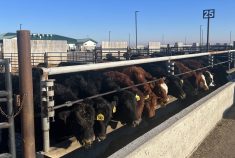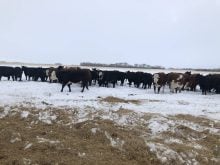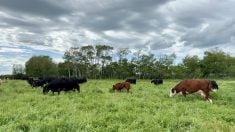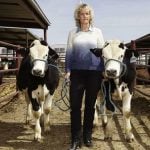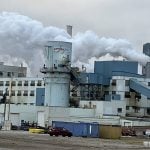Feed, particular the cost of putting up preserved forage is one of the largest factors influencing the cost of maintaining the cow herd. In cost-of-production studies carried out by the Western Beef Development Centre, winter feed costs over a five-year period averaged 30 per cent of total cow costs and in some cases reached 50 per cent of the total. Providing high-quality forage to meet nutrient demands of the overwintering cow is one of the most effective strategies you can employ to reduce feed and overall wintering costs. The issue for many producers at haying or ensiling time however, is the balance between quantity and quality. It has been my experience that too many beef producers opt for quantity versus quality. While there are many reasons for this (i.e. weather, labour, need for feed), often the decision is influenced by a lack of understanding of what constitutes forage quality. The following is a discussion on forage quality, how it changes as a plant matures and why it is important.
Read Also
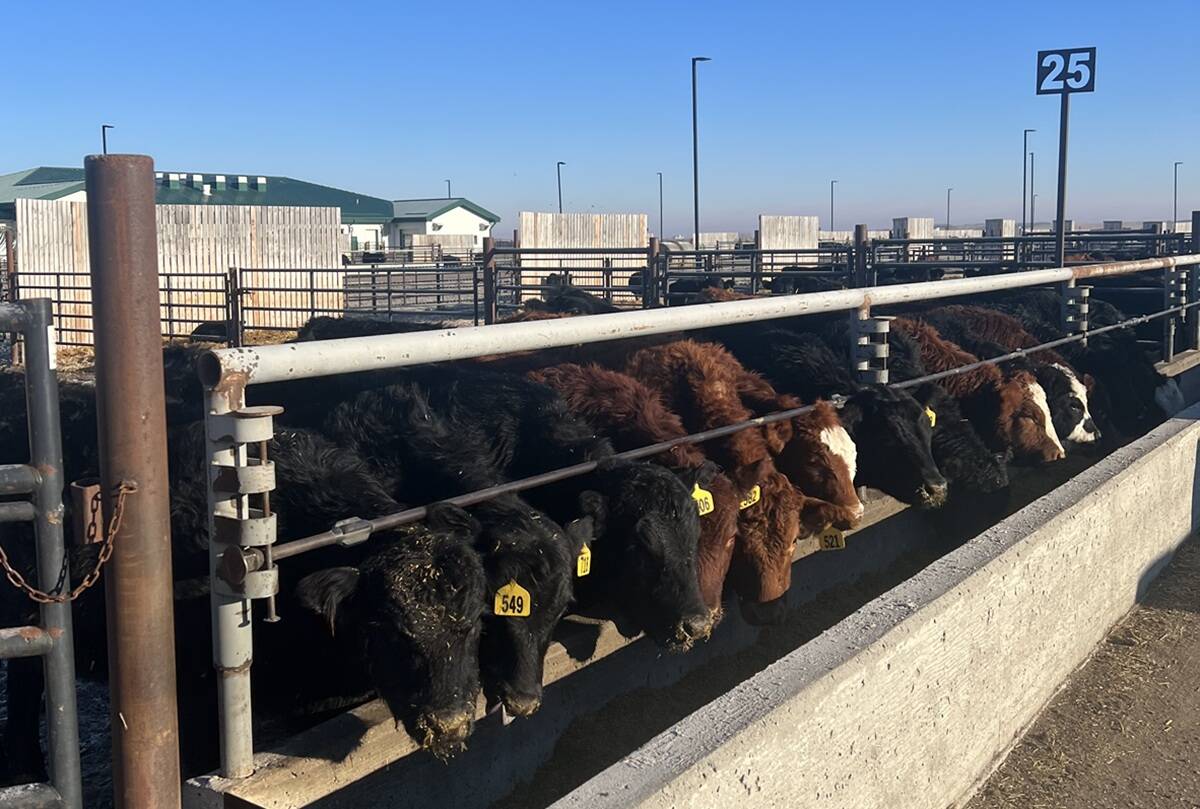
Managing newly received calves in the feedlot
What should cattle feeders focus on after calves arrive at the feedlot?
Forage quality is influenced by many factors including plant species (legumes versus grasses), colour, leaf content, palatability, mould content and plant maturity. While all are important, it is the latter that I want to concentrate on as maturity at harvest influences critical nutritional characteristics such as protein, fibre and energy content. Hay cut at an early stage of maturity with a high-protein and low-fibre content will be higher in nutritive value than the same hay cut at a more advanced stage of maturity. The question is, why?
If one looks at forage growth, from early spring through maturity, characteristic changes occur that influence the nutritive value of the plant. At a basic level, these changes involve individual plant cells which structurally can be considered to consist of a cell wall and cell contents. The cell contents are comprised of a number of highly digestible nutrients including soluble protein, organic acids and non-structural carbohydrates such as starch, sugars and pectin. These highly digestible components are in highest concentration in young immature plants. The cell wall consists of structural carbohydrates such as cellulose and hemicellulose and associated protein and mineral content. The cell wall also contains a non-carbohydrate faction called lignin which is central to understanding the negative influence of maturity on forage quality.
- More from Canadian Cattlemen: Swift Current researchers take the long view
As a plant matures, the cell wall develops in a defined fashion. In a young plant, the cell wall is a relatively thin layer (primary cell wall) that consists mostly of cellulose and hemicellulose. With advancing plant maturity, a secondary cell wall develops that gives the plant strength and rigidity. This secondary cell wall also contains cellulose and hemicellulose, both of which are relatively easily digested by rumen bacteria and thus provide energy to the animal. The issue with advancing plant maturity, however, is that as the secondary cell wall is laid down, the lignin content increases. Lignin is a complex compound that is not digestible. Further, it forms cross-linkages with cellulose and hemicellulose reducing the digestibility of these important carbohydrates. Thus as plants mature, lignin content increases and digestibility decreases. Compounding this negative effect on digestibility is the fact that plant protein content is decreasing with advancing maturity as well. This drop in nutritive value which is a function of reduced digestibility and lower protein levels is the key to understanding forage quality and the need to harvest at the proper stage of plant growth.
We measure forage quality, particularly from a feed perspective, by measuring the relative amounts of these “fibre constituents” of the plant cell wall. Unfortunately “fibre” is not an easily defined term. Forage labs that use wet chemistry methods for analysis will report values for acid (ADF) or neutral (NDF) detergent fibre. Acid detergent fibre refers to the content of cellulose, lignin and ash in the submitted sample while NDF content refers to the cellulose, hemicellulose and lignin content.
Higher ADF values particularly within a forage type will indicate reduced energy content due to the negative association of lignin with digestibility. Neutral detergent fibre is used as an indicator of dry matter intake. Forages high in NDF will provide more bulk to the ration; reduce digestibility and passage rate from the rumen. As a result, dry matter intake is restricted. Research with dairy cattle has shown that selection for forage varieties with higher NDF digestibility lead to higher dry matter intake and increased milk production. Applying the same principle to the beef herd could reduce winter feed costs as well as the amount of manure left behind in the spring!
What is the bottom line for beef producers? In essence, forage quality revolves around stage of plant maturity at harvest. Cut too late and the hay will be high in ADF and NDF and low in protein. Harvest too early and quality as measured by fibre and protein levels is high but hay quantity is limited. Both legumes and grasses will be at their highest nutritive value while in the vegetative state prior to flowering; however, maximum yield typically occurs at full bloom. Finding the right stage to harvest for your operation is the answer and is something to think about as you watch your hay crop grow over the spring and summer.




